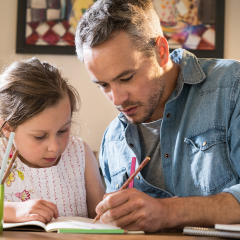Recent media reports suggest that the Covid-19 pandemic has the potential to reverse progress made over the last decade to close the educational gap between disadvantaged pupils and their peers. Primary school leaders want to ensure that every child reaches their full potential, regardless of their background, circumstances or the time they may have spent away from the classroom during this crisis. So, what measures can schools take to support the learning progress of their most vulnerable pupils and prevent any child from falling through the net?
What Schools Need To Think About Now
Managing Change
Teachers typically know who their most vulnerable pupils are, but the circumstances of many families may have changed considerably during this time. The pandemic has brought challenges such as bereavement, debt and mental health issues to the doors of some families that have not experienced them before. This could result in an increase in the number of pupils entitled to pupil premium funding or free school meals as lessons resume. It’s essential that you get clarity on the impact of the lockdown on your pupils and their families – your vulnerable cohort may not be the same children as a few months ago.
Things To Think About:
- Consider how you can identify quickly your most vulnerable pupils as more children return to school. You could set up virtual parents’ day meetings with individual families, run a parental survey or make direct contact by phone or email. Factor in additional time and resources to get a clear picture of how families have been affected.
- If your school is running a mix of in class and online learning, how will you continue to provide children on free school meals with lunches? The DfE’s national voucher scheme will help. Some schools have also put plans in place to have meals delivered locally to children at home. Others have set up food banks in school or arranged for community volunteers to ensure children in isolation are provided with meals.
- Additional services may be required, such as counselling or bereavement support to help children with special needs or emotional issues to settle back in. You may also want to look at the options available to provide staff with relevant online training too.
- Plan your budget – any additional funding for new pupil premium children will take time to come through to your school. You may be able to refocus areas of your school’s budget on the ICT or additional support you need to provide for vulnerable pupils and those with special educational needs until the system catches up.
- Some parents will be fearful of sending their children back to school or may need additional support at home. Communicate regularly with them and share any updated policies or other relevant information to keep them informed of the help being made available.
What Schools Need To Think About Next
Closing The Gap
While many schools have kept their doors open to their most vulnerable pupils throughout the lockdown, attendance levels have varied greatly across the country. Vulnerable pupils and those with special educational needs may have had very different experiences of learning from home too. Some families have had to juggle multiple commitments alongside home-schooling and there will be children who have fallen behind without the specialist support they are provided within school.
Things to Think About:
- What steps can you take to minimise learning loss for those children who have not yet returned to school, for whatever reason? The loan of a school laptop or tablet device could make the world of difference to the progress of a child whose family do not have access to internet enabled devices at home.
- Discuss how teachers can help children to catch up with their learning in the weeks and months ahead. Some one-to-one sessions may be needed, or your school might want to deliver targeted support to small groups of children in subjects such as literacy and maths, for example.
- Plan how you can best utilise key staff such as your SENCo, TAs and parent liaison officers. They will be critical for supporting vulnerable pupils and those with special educational needs or pastoral issues, both in school and at home. Could your SENCo work alongside other teachers in the classroom, or does your school need a separate area in which to support vulnerable children?
- Consider whether your school needs to provide some form of distance counselling for pupils who are struggling with mental health or other issues. And if so, ensure your SENCo or relevant staff member has the IT infrastructure to support this.
- Look at updating your school’s policies and procedures for managing issues such as low level disruption in class. The current situation may require a fresh approach to help ensure behavioural and other issues are managed effectively and sensitively across your school, so that all pupils have a safe and happy space in which to learn and progress.
For The Longer-Term
- Consider how your school could continue to provide the support that’s been put in place for vulnerable children during the current crisis on a longer term basis. Could you partner with a neighbouring school and share staff or resources? You might want to launch an online networking group where educators, social workers and special needs professionals can share ideas and examples of best practice.
- Work with teachers across your school to put early intervention strategies in place that will help address issues sooner to prevent exclusions. With many children having spent so long away from the classroom, getting the right support at the right time could make a real difference and keep them in school.
- Keep in regular contact with parents and carers to ensure they get the help they need to continue the support they are providing to their children at home.
As the number of children returning to the classroom increases, schools are acutely aware that they may not be welcoming back the same learning community that they created before Covid-19. But they will continue to have the same firm focus they have always had on ensuring that every child gets the support they need to learn and thrive, both inside and outside the classroom.









